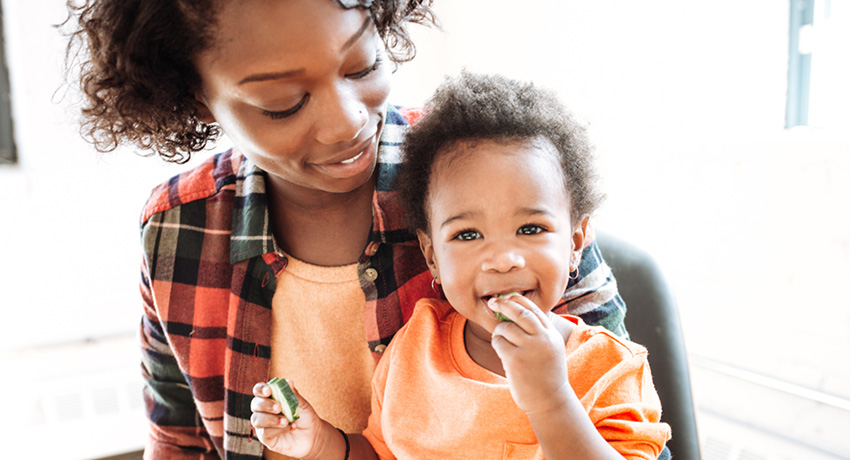It’s every parent’s or caregiver’s worst nightmare — seeing their child struggle to breathe. Unfortunately, it’s all too common, according to the American Academy of Pediatrics. Food-related choking causes the death of approximately one child every five days in the U.S.
Pediatric experts from UT Physicians and UTHealth break down common choking hazards and how to keep your child safe from them.
Food and snacks
Some food or snack items are considered high risk for choking due to their size, preparation, or consistency. Children under 4 years old are still learning how to chew and swallow foods properly and their airways are small and narrow.

Sandra L. McKay, MD, pediatrician with UT Physicians, recommends parents carefully prepare these common choking hazards:
- Grapes
- Hot dogs
- Cherries
- Cherry tomatoes
- Carrots
“I always recommend parents cut food into quarters, not halves,” said McKay, associate professor of pediatrics at McGovern Medical School at UTHealth. “That way, if a child forgets to chew enough or they take too big a handful, they can swallow more easily and without choking.”
Although some foods can be prepared by serving a safe portion size, McKay does suggest avoiding nuts, hard candies, and popcorn until 5 years of age.
Another way to stay safe during meal or snack time is to eat at the table and supervise children while eating. Sitting down for meals is safer, promotes better nutrition, and is an important family time that contributes to child development.
“Letting your child walk or crawl while eating is not recommended,” said McKay. “I know there are many products on the market for on-the-go eating, but food should be limited to table-time.”
Household items
While food does account for the majority of choking incidents among children, small objects around the house can also be dangerous.

“Button-sized batteries are the most lethal small object a child could swallow and choke on,” said Mary E. Aitken, MD, professor and Dan L Duncan Distinguished University in Pediatrics at McGovern Medical School.
These coin-sized batteries are found in many household objects, such as children’s toys or remote controls. When swallowed, they can become lodged in the esophagus of a small child. They can cause severe internal burns, serious injury, long-term disability, or even death.
Other items to be aware of around kids are deflated balloons, small toys, coins, pen or marker caps, and pet food.
To ensure a home is safe for little ones, Aitken recommends getting on a child’s level and crawling around to see what they see. This view can help identify risks and provide a safe environment for the exploration that is normal and important for a child’s development.
“Every day you have to childproof your home because every day your child is going to show you what you’ve missed,” she said.
Responding to an emergency
Choking hazard safety is broken down into prevention and response. Prevention includes watching what a child has access to and how their food is prepared and served. It is also critical to respond to an emergency should it happen.
“All parents and caregivers should know CPR and how to respond if a child chokes,” said Aitken. “If a child is choking and cannot breathe, 911 should be called immediately and families should perform choking first aid or possibly CPR based on how the child is responding.”
Depending on the age and size of a child, procedures for choking first aid and performing CPR can be different. For example, the Heimlich maneuver is appropriate in older kids but not small infants.
Many local and national organizations offer online or in-person classes to receive CPR and choking procedures training. Aitken recommends the American Red Cross and the American Heart Association for guidance.
For additional information on choking hazards, visit the American Academy of Pediatrics’ page.
“These things stick with you when you see them because they can be devastating,” said McKay. “If parents or caregivers have any questions about child safety, please know that your pediatrician is there to help answer them for you.”


